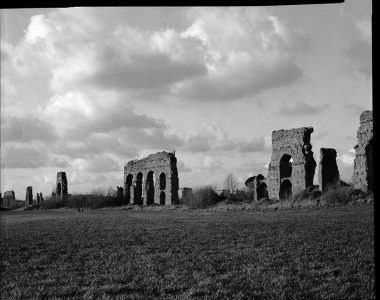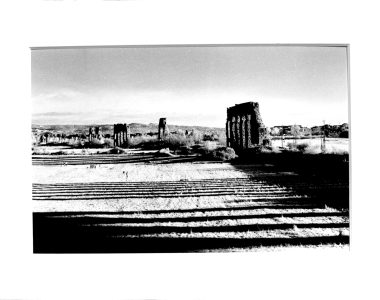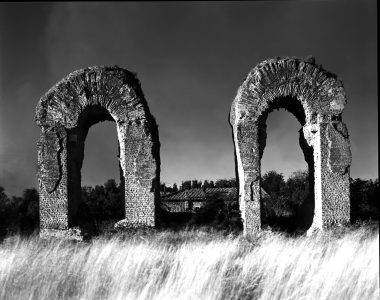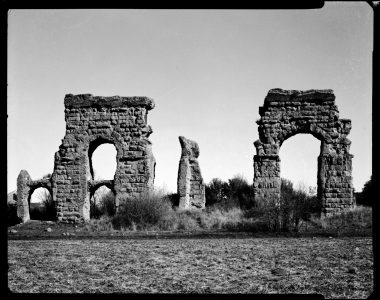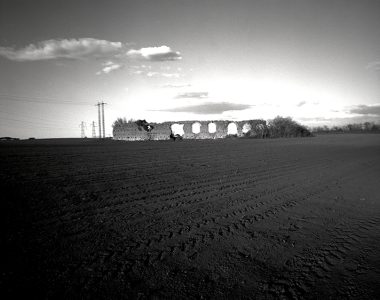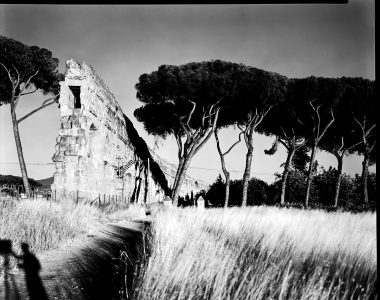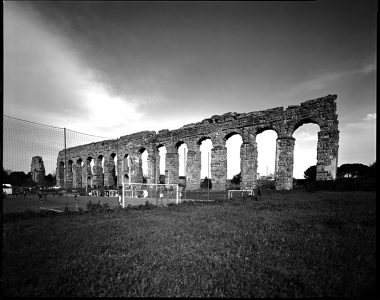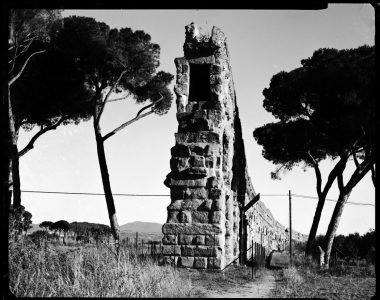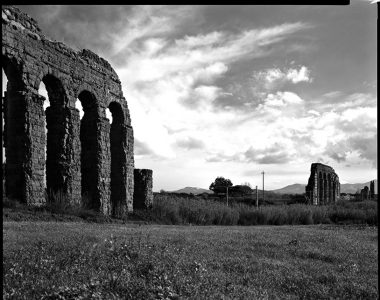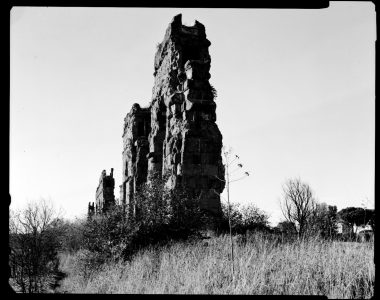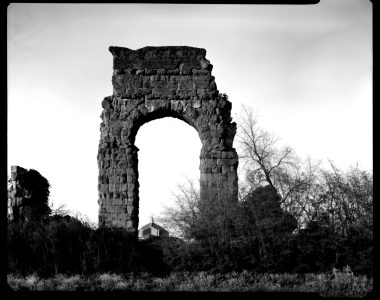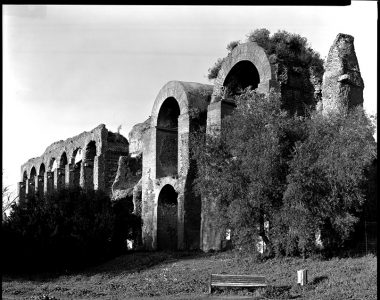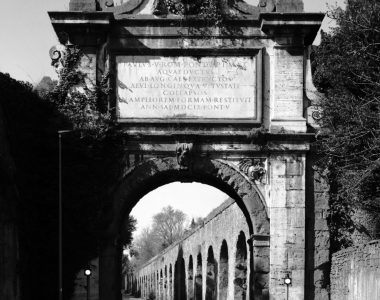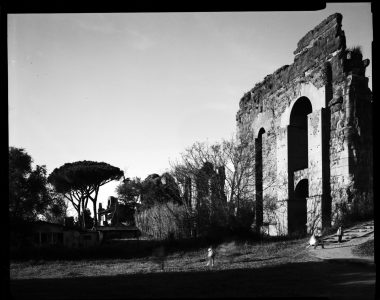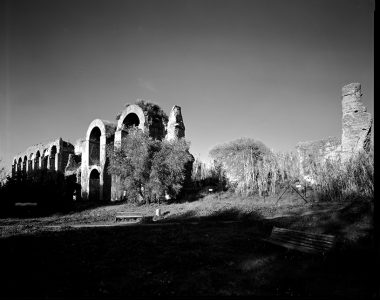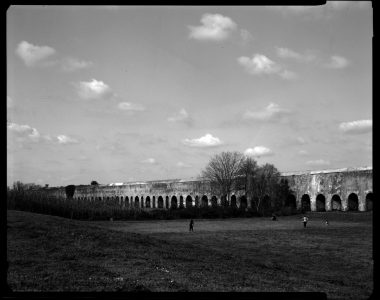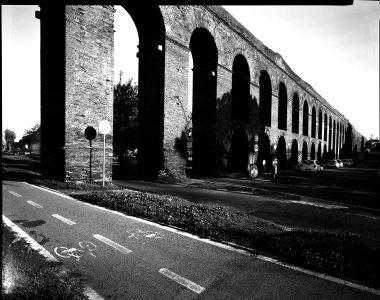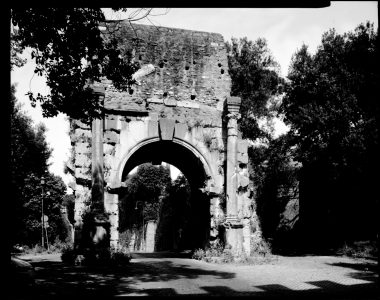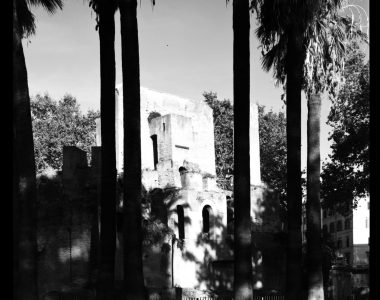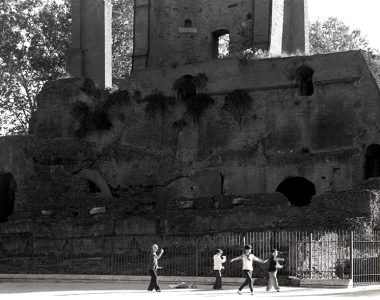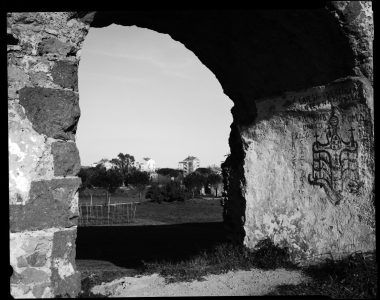Water Giants 312B.C.
The Aqua Appia was the first Roman aqueduct built in 312 B.C. by Appius Claudius Caecus, before then Rome used the waters of the Tiber, wells & springs. So by the time we come to the second century there were eleven aqueducts, nine hundred million gallons of water a day was transported to the city of Rome, four hundred miles of aquifers veins that run through valleys and mountains, transporting the water by a very ingenious method of gravity.
Pliny the Elder (23-79 AD) wrote: “Who wants to carefully consider the quantity of water for public use for the baths, swimming pools, fountains, houses, suburban gardens, villas; the distance from which the water comes, the conduits that have been built, the mountains that have been drilled, the valleys that have been crossed, he will have to recognize that nothing in the whole world has ever existed more wonderful “.
L’Aqua Appia fu il primo acquedotto romano costruito nel 312 a.C. da Appio Claudio Cieco, prima di allora Roma utilizzava le acque del Tevere, pozzi e sorgenti. Quindi quando arriviamo al II secolo c’erano undici acquedotti, novecento milioni di litri d’acqua al giorno venivano trasportati alla città di Roma, quattrocento miglia di vene falde acquifere che attraversano valli e montagne, trasportando l’acqua con un metodo ingegnoso della gravità.
Plinio il Vecchio (23-79 d.C.) scrive: “Chi vuol considerare attentamente la quantità dell’acqua ad uso pubblico per le terme, le piscine, le fontane, le case, i giardini suburbani, le ville; la distanza da cui esce l’acqua, le condotte che sono state costruite, le montagne che sono state forate, le valli che sono state attraversate, dovrà riconoscere che nulla al mondo è mai esistito di più meraviglioso.
This project is depicting the agony of the aqueducts, they are ruins scattered in the Campagna, but it is difficult to regard them simply as man -made when they have such a special aura, when they sometimes paper natural to the landscape. They seem even older then the mountains. They sometimes come alive like ancient skeletons, or creations of giants, always they make us think of the greatness of the Eternal city, and the growing of Rome naturally in and out of its own glorious past.
Questo progetto racconta l’agonia degli acquedotti, sono ruderi sparsi nella campagna, ma è difficile considerarli semplicemente opera dell’uomo quando hanno un’aura così speciale, quando a volte si inseriscono con naturalezza nel paesaggio. Sembrano ancora più vecchi delle montagne. A volte prendono vita come scheletri antichi o creazioni di giganti, ma ci fanno sempre pensare alla grandezza della Città Eterna e alla crescita naturale di Roma dentro e fuori dal suo glorioso passato.
FINE ART PHOTOGRAPHY \ Hand made Portfolio:
Deardorff 10by8 \ Wista Camera 5by4 \ 7by9 exposing B&W film or sensitive paper.
Black and white film hand printed on silver-gelatin fibre – based paper. All prints are signed and printed on a very limited edition 1\40. Sizes available. 9×12\ 12×16\ 20×24 Please for more details & orders contact: olivieroolivieri19@gmail.com \ Shipping prices are at cost. Prints are normally sent in an archival sleeve either in a reinforced roll or flat box.
Le stampe in bianco e nero sono stampate a mano da me su carta a base di fibra di gelatina d’argento. Queste sono i formati disponibili. 24″x30″ 30″x40″ 50″x 60″ Salvo stampa a contatto\ Prezzi su richiesta. Contattami a: olivieroolivieri19@gmail.com \ I prezzi di spedizione dipendono dal formato e dal peso della stampa. Le stampe vengono normalmente inviate in una custodia d’archivio in un rotolo rinforzato o in una scatola piatta.
